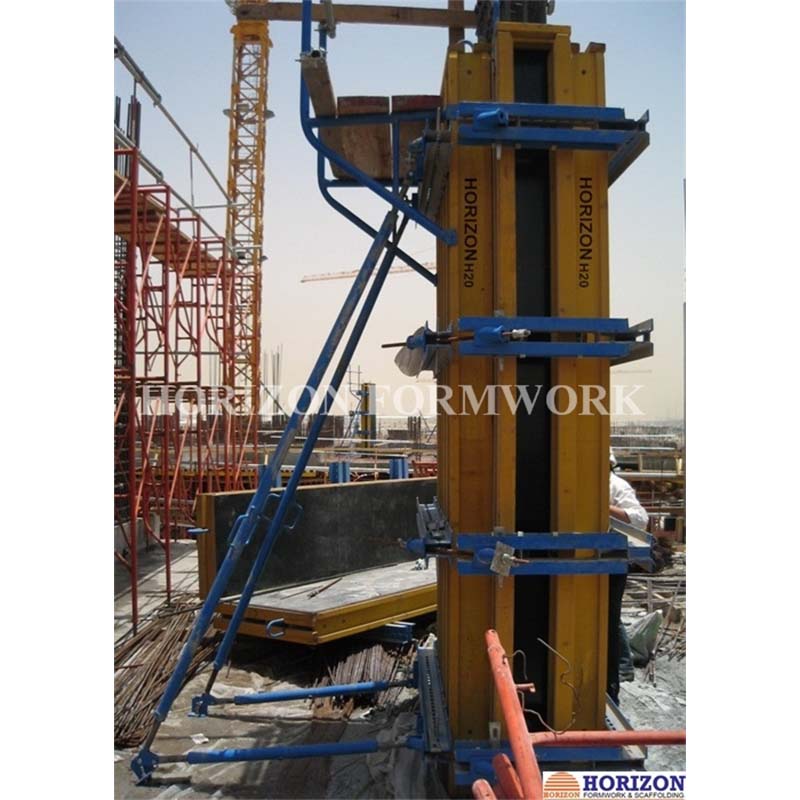Mar . 21, 2024 09:32 Back to list
The Different Types of Formwork Used in Concrete Construction Column Formwork
Overtime, there have been many different types of materials used to build structures such as homes and bridges. In early times, timber was used extensively given that trees were abundant and structures could be quickly and easily built using timber. More recently, steel has become a popular material due to its strength and durability and is one of the most widely used building materials in construction today.
Adjustable Column Formwork
Despite this, one building material that has been used for thousands of years and is still used extensively today is concrete. While the use of concrete in construction didn’t become mainstream until the mid-19th century, concrete is still favoured as a building material due to its many advantageous properties.
The reason why concrete is still one of the most popular building materials is because it’s safe, durable, sustainable, and economical. One essential ingredient used in concrete construction is formwork, which are temporary or permanent moulds into which concrete is poured until the concrete is self-supporting.
Different concrete structures need different types of formwork. This must be designed and erected before any concrete pouring is done and can be used for a concrete foundation, slabs, flooring, columns, walls, beams and other concrete structures.

Wall and Column Formwork – Metal formwork used for building concrete walls and pillars as well as some foundations, footings and abutments. Rectangular concrete boxing is the simplest type of formwork, but circular formwork and other shapes may be used for columns and other architectural features.
Slab Formwork – Steel or aluminium formwork used for forming concrete slabs of all sizes and thicknesses, along with other flat forms such as beams, column heads and infillings.
Timber Beams and Plywood – A cheaper option than metal formwork, though less strong with reduced load capacity, wooden formwork can support horizontal concrete forms for slabs and foundations.
Props and Shoring Systems – Steel and aluminium formwork with a high load capacity to support overhead concrete and larger structures at height, usually combined with falsework.
Engineered Formwork System - This type of formwork is built from prefabricated modules with a frame typically made from steel or aluminium. The Engineered Formwork System can be constructed much faster (using pins and clips) and has lower costs since it can be reused thousands of times.
Reusable Plastic Formwork - This type of formwork is made from lightweight and robust plastic that create interlocking and modular formwork systems. This type of formwork is an excellent choice for small but repetitive construction projects, such as low-cost housing estates.

In modern construction, concrete structures vary considerably and are designed to suit different purposes. Depending on the type of structure being built, any of the above mentioned formwork can be used to construct an affordable, durable, and sustainable structure that provide many advantages over other types of building materials. As you can see, selecting the most suitable formwork for your project is paramount to its success, so if you have any questions or concerns about which type of formwork is best for your requirements, get in touch with our team at HORIZON, by contacting us on:
-
China Single Sided Wall Formwork: AI-Optimized Solutions
NewsAug.02,2025
-
H20 Timber Beam Enhanced with GPT-4-Turbo AI Design
NewsAug.01,2025
-
Premium Timber Beam H20 | Strong & Durable Construction
NewsJul.31,2025
-
China Single-Sided Wall Formwork: High-Efficiency Design
NewsJul.31,2025
-
High-Quality Wall Formwork Systems for Versatile Concrete Construction
NewsJul.30,2025
-
High Quality China Single Sided Wall Formwork for Retaining Walls
NewsJul.30,2025
